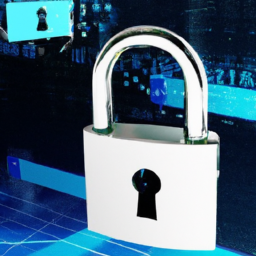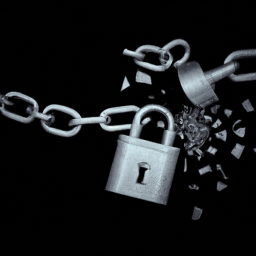How Can Threat Hunting Activities Bolster Our Continuity Preparations?
In today’s rapidly evolving digital landscape, ensuring the continuity and security of our systems has become paramount. That’s where threat hunting activities come into play. By proactively seeking out potential security risks and vulnerabilities, we can bolster our continuity preparations and stay one step ahead of potential threats. By adopting a friendly and collaborative approach to threat hunting, we can create a safer and more reliable environment for ourselves and our organizations. So, let’s explore how these activities can enhance our continuity plans and empower us to navigate the ever-changing cybersecurity landscape with confidence.
Understanding Threat Hunting
What is threat hunting?
Threat hunting is an active approach to cybersecurity that involves proactively searching for and identifying potential threats within an organization’s network. Unlike traditional security measures, which focus on passive defense and detection, threat hunting takes a proactive stance by actively searching for signs of compromise and malicious activity.
Why is threat hunting important?
Threat hunting is crucial in today’s rapidly evolving and complex digital landscape. It allows organizations to stay one step ahead of cyber adversaries by detecting and mitigating threats before they can cause significant damage. By actively hunting for threats, organizations can identify and address vulnerabilities, prevent potential breaches, and protect critical assets and data.
Common techniques used in threat hunting
Threat hunting employs a variety of techniques to identify and investigate potential threats. These techniques include:
- Log analysis: Examining log data from various sources, such as firewalls, antivirus systems, and intrusion detection systems, to identify any abnormal or suspicious activities.
- Endpoint analysis: Analyzing the behavior of endpoints, such as desktops, laptops, and servers, to detect any unusual patterns or indicators of compromise.
- Network traffic analysis: Monitoring network traffic to identify anomalous behavior, such as unusual data transfers or communication with malicious IP addresses.
- Threat intelligence: Leveraging external sources of threat intelligence to stay informed about the latest threats and indicators of compromise.
- Behavioral analytics: Using machine learning and artificial intelligence algorithms to detect abnormal behavior or deviations from established patterns.
By combining these techniques, organizations can proactively identify and respond to potential threats before they can cause significant harm.
The Importance of Continuity Preparations
What is continuity preparation?
Continuity preparation, also known as business continuity planning, refers to the process of developing strategies and measures to ensure the continued operation of critical business functions in the face of disruptive events. These events can range from natural disasters and power outages to cyber-attacks and pandemics.
Why do businesses need continuity preparations?
Continuity preparations are essential for businesses as they enable them to minimize the impact of disruptive events and maintain operations during times of crisis. By having a comprehensive continuity plan in place, organizations can ensure the availability of critical resources, mitigate financial losses, protect their reputation, and meet contractual and regulatory obligations.
Challenges in continuity preparations
Implementing effective continuity preparations can be challenging due to various factors. Some common challenges include:
- Lack of awareness: Many organizations fail to recognize the importance of continuity preparations until they experience a significant disruption. This lack of awareness can result in inadequate planning and a reactive rather than proactive response.
- Resource constraints: Developing and maintaining continuity preparations require dedicated resources, including time, budget, and personnel. Many organizations struggle to allocate sufficient resources to continuity planning, jeopardizing their preparedness.
- Complex organizational structures: Large, decentralized organizations may face challenges in coordinating efforts across multiple departments and business units, hindering the development of cohesive and robust continuity plans.
- Changing threat landscape: The evolving nature of threats, including cyber-attacks and technological advancements, introduces new challenges in continuity preparations. Organizations need to adapt their plans and strategies to address emerging threats effectively.
Despite these challenges, continuity preparations are essential for organizations to ensure their resilience and ability to continue operating during times of adversity.
The Relationship between Threat Hunting and Continuity Preparations
Identifying potential threats
Threat hunting plays a critical role in continuity preparations by identifying potential threats that could disrupt business operations. By actively searching for threats, organizations can uncover vulnerabilities and weaknesses before they are exploited. This proactive approach allows businesses to address these threats, strengthen their security posture, and reduce the likelihood of disruption.
Early detection and mitigation
Threat hunting also enables early detection and mitigation of threats, which is crucial for minimizing the impact of disruptive events. By actively hunting for threats, organizations can detect and respond to potential attacks in their early stages, preventing or reducing the damage they can cause. This early detection and mitigation can significantly enhance the organization’s ability to maintain continuity during a crisis.
Improving incident response plans
threat hunting activities provide valuable insights into the organization’s incident response capabilities. By actively hunting for threats, organizations can identify potential gaps and weaknesses in their incident response plans and processes. This knowledge allows them to refine and improve their response strategies, ensuring more efficient and effective incident management during disruptive events.
Integrating Threat Hunting into Continuity Preparations
Assessing current threat landscape
To effectively integrate threat hunting into continuity preparations, organizations must first assess their current threat landscape. This assessment involves understanding the types of threats they face, the vulnerabilities they have, and the potential impact of those threats on business operations. By gaining this insight, organizations can tailor their threat hunting activities to address their specific risks and challenges.
Defining threat hunting objectives
Once the current threat landscape is assessed, organizations should define clear and measurable objectives for their threat hunting activities. These objectives should align with the overall goals of continuity preparations, such as minimizing the risk of disruption and ensuring the availability of critical systems and data. By setting specific objectives, organizations can focus their threat hunting efforts and measure the effectiveness of their activities.
Collaboration between security and continuity teams
Effective integration of threat hunting and continuity preparations requires close collaboration between the security and continuity teams within an organization. These teams should work together to align their goals, share information, and develop strategies that enhance both security and continuity. By fostering collaboration, organizations can leverage the expertise of both teams and maximize the effectiveness of their threat hunting efforts.
Key Benefits of Threat Hunting for Continuity Preparations
Proactive threat detection
One of the key benefits of threat hunting for continuity preparations is its proactive nature. Threat hunting allows organizations to identify and address potential threats before they can cause significant disruption. By actively searching for threats, rather than relying solely on passive defense measures, organizations can detect and mitigate risks earlier, minimizing the impact on business continuity.
Reducing downtime
By actively hunting for threats, organizations can reduce the downtime associated with disruptive events. Early detection and mitigation of threats allow businesses to respond more quickly and effectively, minimizing the duration and impact of an incident. This reduced downtime enables organizations to maintain critical operations and minimize financial losses during a crisis.
Enhancing business resilience
Threat hunting activities contribute to enhancing an organization’s overall resilience. By proactively identifying and addressing potential threats, organizations can strengthen their security posture and reduce their vulnerability to disruptive events. This enhanced resilience enables businesses to better withstand and recover from crises, ensuring the continuity of operations and minimizing the long-term impact on the organization.
Best Practices for Threat Hunting to Bolster Continuity Preparations
Continuous monitoring and analysis
To effectively bolster continuity preparations, organizations should adopt a mindset of continuous monitoring and analysis. This involves regularly monitoring their networks, systems, and data for any signs of compromise or unusual activities. By continuously analyzing the collected data, organizations can identify potential threats and take immediate action, minimizing the risk of disruption.
Utilizing threat intelligence
threat intelligence plays a crucial role in threat hunting activities. Organizations should leverage external sources of threat intelligence, such as industry reports and information sharing partnerships, to stay informed about the latest threats and attack vectors. This intelligence can greatly enhance the effectiveness of threat hunting efforts, enabling organizations to identify and respond to emerging threats proactively.
Employing advanced detection techniques
As threats become more sophisticated, organizations need to employ advanced detection techniques in their threat hunting activities. These techniques may include behavioral analytics, machine learning, and artificial intelligence algorithms that can analyze large volumes of data and detect patterns indicative of malicious activity. By utilizing these advanced techniques, organizations can stay ahead of evolving threats and improve their ability to detect potential risks.
Successful Case Studies: Threat Hunting and Continuity Preparations
Company A: Mitigating ransomware attacks
Company A, a financial institution, integrated threat hunting into its continuity preparations to enhance its resilience against ransomware attacks. By actively hunting for indicators of compromise and conducting regular vulnerability assessments, the organization detected and mitigated multiple ransomware attacks before they could encrypt critical systems. This proactive approach significantly reduced the downtime and financial impact associated with these attacks, safeguarding the organization’s continuity of operations.
Company B: Identifying supply chain vulnerabilities
Company B, a manufacturing company, recognized the importance of threat hunting in securing its supply chain. Through ongoing threat hunting activities, the organization identified vulnerabilities and potential threats within its supply chain, such as compromised vendors and counterfeit products. By addressing these vulnerabilities and enhancing supplier security requirements, Company B minimized the risk of disruption and maintained the integrity of its manufacturing processes, ensuring business continuity.
Potential Challenges in Implementing Threat Hunting for Continuity Preparations
Resource and budget constraints
Implementing effective threat hunting activities requires dedicated resources, including skilled personnel, tools, and technology. Many organizations face challenges in allocating sufficient resources and budget to support ongoing threat hunting efforts. Lack of resources and budget constraints can impede the organization’s ability to conduct comprehensive threat hunting activities and hinder the integration of threat hunting into continuity preparations.
Staffing and skill requirements
Threat hunting requires specialized skills and expertise that may not be readily available within an organization. Recruiting and retaining qualified threat hunting professionals can be challenging, especially in a competitive job market. The shortage of skilled personnel can hinder organizations’ ability to develop and maintain robust threat hunting capabilities, limiting the effectiveness of their continuity preparations.
Integration with existing processes
Integrating threat hunting into existing processes and workflows can present challenges, particularly in complex organizational structures. Coordinating efforts between security, continuity, and other relevant teams requires careful planning and communication. Failure to integrate threat hunting seamlessly into existing processes can result in siloed efforts, inconsistent information sharing, and reduced overall effectiveness.
The Future of Threat Hunting in Continuity Preparations
Automation and AI
The future of threat hunting in continuity preparations lies in automation and artificial intelligence (AI). As the volume and complexity of threats continue to increase, organizations will rely more on automated tools and AI algorithms to analyze vast amounts of data and detect potential risks. Automation can streamline threat hunting processes, allowing organizations to respond quickly and effectively to emerging threats.
Predictive threat hunting
Predictive threat hunting is another area that holds promise for the future. By utilizing advanced analytics and predictive modeling techniques, organizations can anticipate and proactively address potential threats before they materialize. Predictive threat hunting leverages historical data, threat intelligence, and machine learning algorithms to identify patterns and indicators of future threats, enabling organizations to stay one step ahead of cyber adversaries.
Collaborative industry initiatives
The future of threat hunting in continuity preparations also involves collaborative initiatives within the industry. Information sharing partnerships, public-private collaborations, and the establishment of industry-wide standards and best practices can facilitate knowledge exchange and enhance collective defense against evolving threats. By working together as a community, organizations can strengthen their continuity preparations and effectively respond to shared cybersecurity challenges.
Conclusion
Threat hunting activities offer significant benefits to an organization’s continuity preparations. By proactively searching for potential threats, early detection and mitigation, and enhancing incident response plans, threat hunting bolsters an organization’s resilience and minimizes the impact of disruptive events. To integrate threat hunting effectively, organizations should assess the current threat landscape, define clear objectives, and foster collaboration between security and continuity teams. By adopting best practices, such as continuous monitoring, utilizing threat intelligence, and employing advanced detection techniques, organizations can enhance their threat hunting capabilities and improve their ability to maintain business continuity. The future of threat hunting in continuity preparations lies in automation, predictive analytics, and collaborative industry initiatives, providing organizations with increased agility and resilience in the face of evolving threats.








